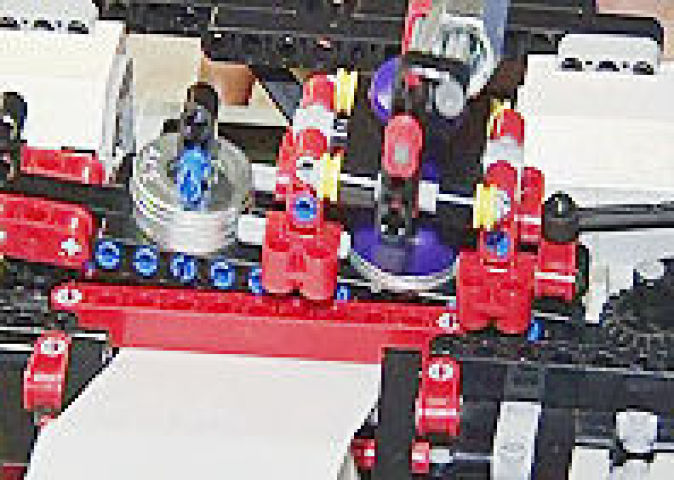A braille printer made from lego

How are visually-impaired people able to read? That's the question Shubham asked his parents as part of a science project he was doing for his school last year. After a little research on Braille, he learned that there are around 285 million visually-impaired people in the world, of which around 90% are in developing countries. He discovered that Braille printers were extremely expensive, around 2,000 dollars at the very least, and that millions of people only had limited access to such printers.
This led him to create the Braigo: every evening, after finishing his homework, the young inventor worked on developing his prototype for a Braille printer developed using a box of LEGO Mindstorms EV3, which can be manufactured for less than 500 dollars.
Since then, his idea has caught on!
After validation of the Braigo v1.0 (contraction of "Braille" and "Lego") by the Santa Clara Valley Blind Centre in San José, and positive comment from many visually-impaired people, the printer's success encouraged Banerjee to create his own company "Braigo Labs" with the aim of improving his prototype: he immediately started working on the Braigo V2.0, a client-focused product which would be easily accessible to all. Intel, seduced by the project, invested an undisclosed sum into the company. However, the young inventor decided to give away the Braigo's manufacturing secrets to the world in the hope that his printer and his programme can be improved upon by other developers.
In September 2014, he presented the prototype of the Braigo v2.0 at Intel's Developer Forum in San Francisco. The new version of the printer, equipped with patent-pending technology, promises to be the lightest, most connected and silent, and most likely cheapest, Braille printer when it is commercialised.
A test period has been planned for the summer with the aim of marketing the product at the end of the year.
More information
www.braigolabs.com/





